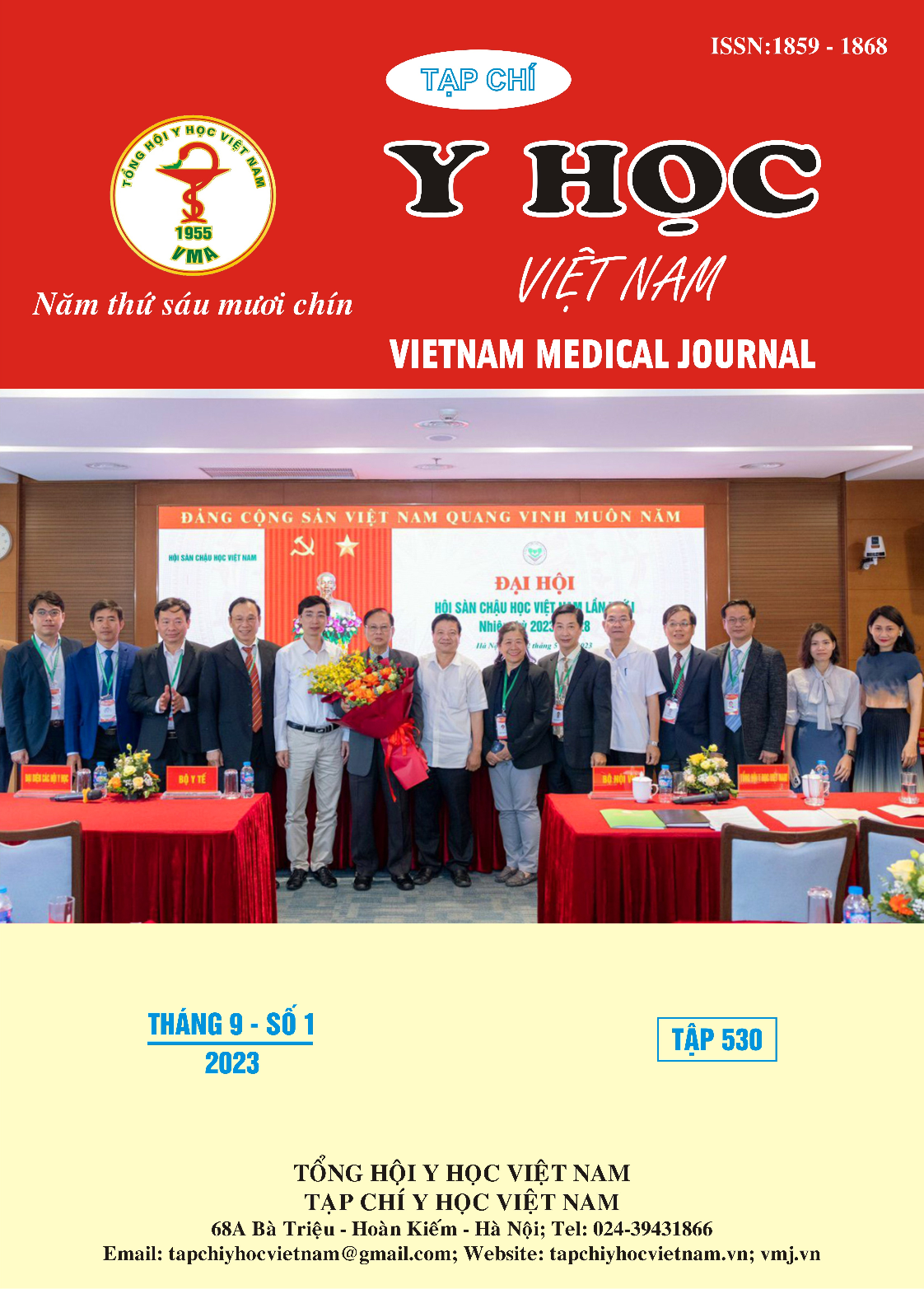SOLID ORGAN AND HEMATOPOIETIC STEM CELL TRANSPLANTATION AT CHILDREN'S HOSPITAL 2: CHALLENGES AN ACHIEVEMENTS
Main Article Content
Abstract
Background: The need for liver, kidney, and stem cell transplants in children increases. Children's Hospital 2 (ND2) develops these techniques as a last-line referral pediatric hospital and the only public pediatric organ transplant center in the South of Vietnam. Patients and methods: Children who received liver, kidney, and hematopoietic stem cell transplants in ND2 were retrospectively reviewed. Results: There were 25 cases of living-related donor liver transplantation from 2005 to 2022. Follow-up time was 4 months - 17 years. The survival rate of liver recipients was 20/25 cases (80%), no complication in liver living donors was observed. There were 24 cases of kidney transplantation from 2004 to 2022 (22 living donors and 2 brain-dead donors). Follow-up time was 1-16 years. Well-functioning kidney rate was 18/24 cases (75%). Survival rate was 21/24 cases (87.5%). There were 5 cases of hematopoietic stem cell transplantation from 2020 to 2023. Follow-up time was 2-32 months. Survival rate was 4/5 cases (80%). Conclusion: Organ transplantation at ND2 was well-developed with support from experienced domestic and international centers. Existing obstacles including the lack of financial support, personnel shortages, and inadequacy in equipment, facilities and immunosuppressive drugs for organ transplants need to be addressed. As for liver and kidney transplants, it is necessary to increase the organ pool for children from brain-dead donors.
Article Details
Keywords
hematopoietic stem cell transplantation, liver transplantation, kidney transplantation, pediatric.
References
2. Gurevich M, Guy-Viterbo V, Janssen M, Stephenne X, Smets F, Sokal E, Lefebvre C, Balligand JL, Pirotte T, Veyckemans F, Clapuyt P, Menten R, Dumitriu D, Danse E, Annet L, Clety SC, Detaille T, Latinne D, Sempoux C, Laterre PF, de Magnée C, Lerut J, Reding R (2015), “Living Donor Liver Transplantation in Children: Surgical and Immunological Results in 250 Recipients at Université Catholique de Louvain”, Ann Surg, 262(6):1141-1149, DOI: 10.1097/SLA.0000000000001094.
3. Hariharan S, Israni AK., Danovitch G (2021), “Long-Term Survival after Kidney Transplantation”. N Eng J Med, 385:729-743, DOI: 10.1056/NEJMra2014530.
4. Ladenstein R, Pötschger U, Hartman O, Pearson AD, Klingebiel T, Castel V, Yaniv I, Demirer T, Dini G (2008), “EBMT Paediatric Working Party. 28 years of high-dose therapy and SCT for neuroblastoma in Europe: lessons from more than 4000 procedures”, Bone Marrow Transplant, 41 Suppl 2:S118-27, DOI: 10.1038/ bmt.2008.69.
5. Mazzucchi E et al (2005), “Surgical complications after renal transplantation in grafts with multiple arteries”, International Braz J Uro,31(2):125-130, DOI: 10.1590/s1677-55382005000200006.
6. Merion RM, Goodrich NP, Johnson RJ, et al (2018), “Kidney transplant graft outcomes in 379 257 recipients on 3 continents”, Am J Transplant, 18:1914-1923, DOI: 10.1111/ajt.14694.
7. Pham YH, Miloh T (2018), “Liver Transplantation in Children”, Clin Liver Dis, 22(4):807-821, DOI: 10.1016/j.cld.2018.06.004
8. Reding R, Tran DA (2006), “First pediatric liver transplantation in Ho Chi Minh City, Vietnam”, Pediatr Transplant,10:402-404, DOI: 10.1111/ j.1399-3046.2006.00505.x


